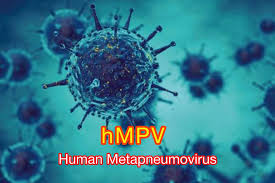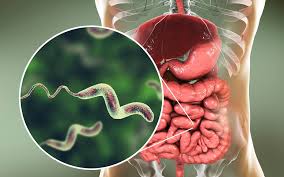What Is HMPV, the Virus Seeing a Surge in China?
Discovered in 2001, human metapneumovirus (HMPV) is a respiratory virus belonging to the Pneumoviridae family, which also includes respiratory syncytial virus (RSV), according to the U.S. Centers for Disease Control and Prevention (CDC). It typically causes upper and lower respiratory infections, with symptoms resembling those of a common cold or flu.
HMPV can affect people across all age groups but is most concerning for young children, the elderly, and those with weakened immune systems, who are particularly vulnerable to severe infections, the CDC reports.
Symptoms of HMPV
Common symptoms of HMPV include:
- Cough and a runny or stuffy nose
- Fever and sore throat
- Wheezing or shortness of breath in severe cases
In some instances, HMPV can escalate to more serious conditions like bronchitis, pneumonia, or asthma exacerbations.
Who Is at Risk?
Certain groups are at higher risk of severe HMPV infections:
- Children under five years old, particularly infants
- Adults over 65 years old
- Individuals with weakened immune systems or chronic respiratory conditions, such as asthma or chronic obstructive pulmonary disease (COPD)
How Does HMPV Spread?
HMPV is transmitted through:
- Respiratory droplets from coughing or sneezing
- Close contact, such as handshakes or touching contaminated surfaces, followed by touching the face
- HMPV exhibits a seasonal pattern, typically circulating in late winter and spring in temperate regions, according to the CDC.
What Can You Do to Prevent It?
To reduce the risk of HMPV and similar respiratory illnesses, the CDC recommends the following:
- Wash hands frequently with soap and water for at least 20 seconds
- Avoid touching your face with unwashed hands
- Wear masks in crowded areas during outbreaks
- Stay home when sick to prevent spreading the virus
- Regularly clean frequently touched surfaces
Testing and Diagnosis
HMPV infections can be diagnosed through:
- Nucleic acid amplification tests (NAATs) for detecting viral genomes
- Immunofluorescence or enzyme immunoassays to identify viral antigens in respiratory secretions
Routine testing is rare and typically reserved for severe symptoms or outbreak scenarios.
Treatment Options
Currently, there is no specific antiviral treatment or vaccine for HMPV. Management focuses on relieving symptoms, as outlined by the Cleveland Clinic:
- Stay hydrated and get plenty of rest
- Use over-the-counter (OTC) medications for pain, congestion, and fever
- Severe cases may require hospitalization for oxygen therapy or intravenous fluids
Current Perspective
While HMPV is causing a rise in respiratory infections, it is neither a new virus nor an imminent pandemic threat. Seasonal surges are expected, especially as populations reacclimate to pathogens following COVID-19 lockdowns.
When to Seek Medical Attention
Seek medical attention if:
- Symptoms worsen after a few days
- Breathing becomes difficult, or cyanosis (bluish skin) develops
- Symptoms occur alongside chronic conditions like asthma or COPD
Comparison Between HMPV and COVID-19
| Aspect | HMPV | COVID-19 |
| Nature of Illness | Not considered a pandemic threat; causes seasonal surges. | Caused a global pandemic with widespread health, social, and economic impacts. |
| Mode of Transmission | Spreads through respiratory droplets, close contact, or touching contaminated surfaces. | Spreads through respiratory droplets, aerosols, and contact with infected surfaces. |
| Seasonality | Peaks in late winter and spring in temperate regions. | Spreads year-round due to evolving variants. |
| Risk Groups | Higher risk for young children, older adults, and individuals with compromised immune systems or chronic conditions. | Higher risk for older adults, individuals with chronic conditions, and those with weakened immune systems. |
| Pandemic Potential | Not considered a pandemic threat; causes seasonal surges. | Caused a global pandemic with widespread health, social, and economic impacts. |
| Immunity Dynamics | Post-lockdown surges attributed to reduced exposure to common pathogens. | Immunity influenced by vaccinations, prior infections, and new variants. |
| Vaccines and Treatments | No vaccine or specific antiviral treatment; symptom relief is the primary approach. | Vaccines and antiviral treatments available to reduce severity and spread. |
| Year of Identification | Discovered in 2001. | Emerged in 2019. |
| Hospitalization Needs | Severe cases may require oxygen therapy or supportive care. | Severe cases may require oxygen therapy, antiviral treatment, or intensive care. |




